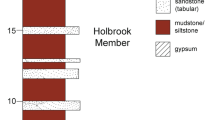Abstract
Recovery and analysis of ancient tissue and bone of human origin has long been extensively investigated. Only recently, however, has it been technically possible to recover genetic material from ancient human1 and animal2 samples. As both previous studies involved dried tissue, it is important to determine whether other conditions may also preserve ancient tissue and genetic material. We describe here an analysis of preserved human bone and soft matter discovered in 1984–85 buried in a small swampy pond in central Florida. The recovered skeletal material represented a minimum of 40 individuals of both sexes and various ages. Corrected radiocarbon dates directly from bone and from peat matrix gave consistent ages in the range of 7,790 to 8,290 yr before present (BP). Nine individuals with intracranial soft matter were recovered and, in five of these, material recognizable as preserved or replaced brain tissue was present. Further analysis demonstrated gross anatomical features, remnant cellular structure and human DNA. As this find appears to be the oldest-known example of preserved human cell structure and DNA, it represents a significant resource for both anthropological and genetic studies.
Similar content being viewed by others
References
Pääbo, S. Nature 314, 644–645 (1985).
Higuchi, R., Bowman, B., Friedberger, M., Ryder, O. A. & Wilson, A. C. Nature 312, 282–284 (1984).
Taubold, R. D. et al. Lipids 10, 383–390 (1975).
Adams, R. D. & Lee, J. C. in Histology and Histopathy of the Nervous System (eds Haymaker, W. & Adams, R. D.) 234–237 (Thomas, Springfield, 1982).
Chang, D. D. & Clayton, D. A. Proc. natn. Acad. Sci. U.S.A. 82, 351–355 (1985).
Anderson, S. et al. Nature 296, 457–465 (1981).
Houck, C. M., Rinehart, F. P. & Schmid, C. W. J. molec. Biol. 132, 289–306 (1979).
Long, E. O. & Dawid, I. B. A. Rev. Biochem. 49, 727–764 (1980).
Goffin, C., Bricteux-Grégoire, S. & Verly, W. G. Biochim. biophys. Acta 783, 1–5 (1984).
Klein, H., Lerman, J., Damon, P. & Ralph, E. Radiocarbon 24, 103–150 (1982).
Luna, L. G. Manual of Histological Staining Methods of the Armed Forces Institute of Pathology 3rd edn (McGraw-Hill, New York, 1968).
Anderson, S. et al. in Mitochondrial Genes (eds Slonimisky, P., Borst, P. & Attardi, G.) 5–43 (Cold Spring Harbor Laboratory, New York, 1982).
Hixson, J. A. thesis, Univ. Michigan (1983).
Upholt, W. B. & Dawid, I. B. Cell 11, 571–583 (1977).
Brown, W. W., George, M. Jr & Wilson, A. C. Proc. natn. Acad. Sci. U.S.A. 76, 1967–1971 (1979).
Mitanich, J. T. & Charles, C. H. Fairbank Florida Archaeology 23 (Academic, New York, 1980).
Author information
Authors and Affiliations
Rights and permissions
About this article
Cite this article
Doran, G., Dickel, D., Ballinger, W. et al. Anatomical, cellular and molecular analysis of 8,000-yr-old human brain tissue from the Windover archaeological site. Nature 323, 803–806 (1986). https://doi.org/10.1038/323803a0
Received:
Accepted:
Issue Date:
DOI: https://doi.org/10.1038/323803a0
- Springer Nature Limited
This article is cited by
-
Latitudinal and climatic distributions of 3D craniofacial features among Holocene populations
Science China Earth Sciences (2014)
-
Skeletal analysis and comparison of bog bodies from Northern European peat bogs
Naturwissenschaften (2010)
-
The microscopic (optical and SEM) examination of putrefaction fluid deposits (PFD). Potential interest in forensic anthropology
Virchows Archiv (2008)
-
Ancient mtDNA haplogroups: a new insight into the genetic history of European populations
International Journal of Anthropology (2002)
-
DNA recovery from ancient tissues: problems and perspectives
Human Evolution (1995)





